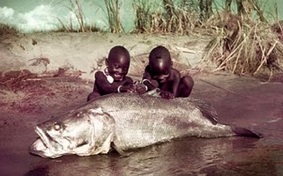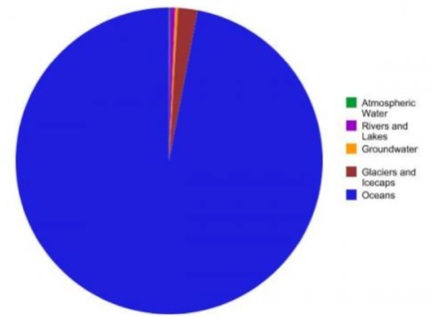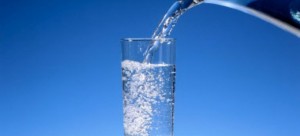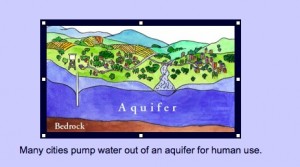- Freshwater is naturally occurring water on the Earth’s surface that is characterized by low concentrations of dissolved salts (less than 500 parts per million, a common measure of the concentration of substances in water).
- Freshwater is found in ponds, lakes, streams, rivers, bogs, and as groundwater (water beneath the Earth’s surface) in underwater aquifers.
- An aquifer is an underground lake that supplies water for wells and springs. Most drinking water in the state of Florida comes from aquifers.
- Freshwater systems can be classified as lentic or lotic. Lentic systems are stagnant, while lotic systems are characterized by moving water.
- Freshwater provides important habitat for many aquatic organisms, and is necessary for the survival of all living things on Earth.
- Freshwater is an important natural resource for humans. We use freshwater for drinking, bathing, agriculture, industrial processing, electricity, and recreation.
- Freshwater ecosystems provide an important source of food. Fifteen percent of fish consumed worldwide occur in freshwater habitats.

Nile perch is an important freshwater food source. While the Nile perch provides critical animal protein to a large population, its introduction into Lake Victoria and other freshwater ecosystems in Africa has caused problematic ecological imbalances. The Nile perch is considered one of the 100 worst invasive species.
- Compared to saltwater, there is very little freshwater on Earth. Saltwater accounts for 97% of all water on Earth.
- Freshwater accounts for only the remaining 3% of water on Earth. Of that 3%, 69% is frozen in glaciers and icecaps and an additional portion is trapped in the atmosphere and underground. Rivers, lakes, and ponds account for less than one percent of our global water supply.

Distribution of water on Earth. While it may seem like fresh water is plentiful in your community, around the world, fresh, safe drinking water is a scarce commodity. Conserving fresh water is therefore one of the most important ecological challenges we face today.
- Water is a renewable resource, but the world’s supply of clean freshwater is shrinking as the population grows and demand increases. Pollution from industry, agriculture, and inappropriate waste disposal makes previously useful freshwater resources unsafe for human consumption.
- Runoff from farms poses a threat to freshwater ecosystems. Fertilizer, pesticides, and livestock waste often drain into nearby bodies of water, leaving them unsuitable for human use.
- Another source of pollution is storm water drains– the drains in street gutters that collect excess water from roads and sidewalks. These drains prevent flooding during heavy rains by collecting rainwater and sending it in large quantities to the nearest body of water. Eventually this water ends up in the ocean.
- Before entering storm drains, rain water mixes with pollutants such as oil, lawn fertilizer, pet waste, and other household chemicals. These substances contaminate our freshwater resources and eventually contribute to marine pollution.
- Due in large part to pollution and other forms of contamination, only about 0.0007% of water on Earth is currently potable, or fit for human consumption.
- In the Unites States, most of us are lucky to have clean water available all the time. Approximately 1/3 of the world’s population struggles to obtain enough clean water to survive.
- It is important to remember that all rivers lead to the ocean. Our treatment of freshwater resources ultimately affects the ocean, and therefore the entire planet. When we pollute our local freshwater resources, we affect people and wildlife in far away places.
Practice Good Stewardship
You can act as a good steward of our freshwater resources by taking small actions to conserve water:
- Turn off the faucet while brushing your teeth and scrubbing dishes. Turning off the tap while you brush your teeth saves up to eight gallons of water per day per person!
- Take shorter showers.
- Make sure the faucet doesn’t drip.
- Dispose of chemicals properly – think about what you flush down the toilet and what you pour down the drain.
- Don’t throw trash, yard clippings, or oil in storm water drains.
Review Questions
- List at least four freshwater systems.
- What is the most common source of drinking water in Florida? Define your answer.
- Freshwater is an important natural resource. Make a list of at least three ways we use freshwater.
- Identify and explain one way that freshwater becomes contaminated.
- Explain how freshwater pollution can contribute to ocean pollution.
Glossary
Aquifer: An underground lake, often found between saturated soil and rock, that yields water to supply wells and springs; this water is referred to as groundwater.
Freshwater: Naturally occurring water on the Earth’s surface that has low concentrations of dissolved salts (less than 500 parts per million).
Groundwater: The water found beneath the Earth’s surface, often in aquifers, that supplies wells and springs.
Lentic: Of or relating to still water – ponds, or lakes.
Lotic: Of or relating to moving water – streams or rivers.
Natural Resource: A naturally occurring material that is valuable to people and/or wildlife.
Parts Per Million (PPM): A way to express the concentration of dissolved or mixed substances. The amount of a substance dissolved or mixed compared to a million parts of the substance in which it is dissolved or mixed. This measure is independent of the units of measure, as long as they are the same; it is abbreviated as ppm. For example, one gram of salt dissolved in 1 million grams of water is 1 ppm. One pound of sugar mixed in 1 million pounds of flour is 1 ppm.
Potable: Freshwater that is safe for human consumption.
Renewable Resource: Any resource that can be replenished naturally with the passage of time.
Runoff: Excess water from rain, snowmelt, or other sources that is not absorbed by soil; runoff often picks up contaminants as it flows along the ground, eventually depositing them in freshwater systems.
Storm Water Drain: A constructed opening in a road system through which runoff from the road flows into an underground system of pipes, eventually leading to nearby freshwater or marine systems.



